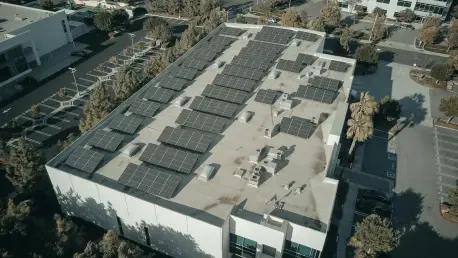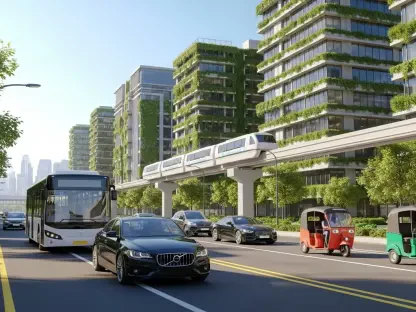Today, we’re thrilled to sit down with Christopher Hailstone, a seasoned expert in energy management and renewable energy, with a deep focus on electricity delivery and grid reliability. As our go-to utilities specialist, Christopher brings a wealth of knowledge about the evolving landscape of energy policy and utility regulation. In this interview, we dive into the recent changes in reimbursement rates for rooftop solar customers in Idaho, exploring the reasons behind the decision, its impact on fairness among utility customers, the public’s response, and the broader implications for renewable energy adoption. Join us as we unpack these critical issues with Christopher’s insightful perspective.
Can you walk us through the reasons behind Idaho Power’s decision to lower reimbursement rates for rooftop solar customers?
Certainly. Idaho Power’s decision to decrease reimbursement rates, often called export credit rates, for rooftop solar customers stems from a need to align compensation with actual energy costs. The utility argued that the previous rates overcompensated solar customers by paying them at the full retail rate for excess energy they fed back into the grid. This didn’t account for the costs Idaho Power incurs, like maintaining the grid and operational expenses. The core issue was that this overcompensation created an imbalance, where the majority of customers—those without solar—ended up subsidizing the difference. It’s really about recalibrating the system to reflect a more accurate cost structure.
How does this change in rates tie into the concept of fairness for all utility customers?
Fairness is at the heart of this adjustment. Idaho Power pointed out that about 98% of their customers don’t have rooftop solar or other on-site generation systems. When solar customers were paid at a rate that didn’t factor in grid maintenance and other fixed costs, it essentially shifted those expenses onto non-solar customers. This created an inequity in how costs were distributed across the customer base. By lowering the reimbursement rates, the utility aims to ensure that everyone pays a more proportional share of the system’s upkeep, regardless of whether they generate their own power.
What can you tell us about the differences between the reimbursement rates Idaho Power requested and what was ultimately approved by the state regulators?
There’s a notable gap between what Idaho Power initially proposed and what the Idaho Public Utilities Commission approved. For summer peak rates, Idaho Power requested about 14.06 cents per kilowatt-hour, but the commission approved a higher rate of approximately 15.68 cents. For summer off-peak, the request was around 1.77 cents, but it was approved at 3.39 cents. Non-summer rates saw a similar adjustment, with Idaho Power asking for 0.95 cents and the commission approving 2.9 cents. Essentially, the commission opted for a smaller decrease than requested, softening the impact on solar customers while still addressing the utility’s concerns.
Who exactly is affected by this rate change, and how many customers are we talking about?
This change impacts roughly 14,000 Idaho Power customers who installed rooftop solar or other on-site generation systems after December 20, 2020. Those who had systems in place before that date are considered legacy customers and are exempt from the new rates, maintaining their previous compensation structure. While rooftop solar is the most common, other systems like small wind or power setups are also affected if they were installed after the cutoff. It’s a specific segment of the utility’s over 650,000 total customers, but still a significant group.
What has been the public’s reaction to this decision to lower reimbursement rates for solar customers?
The reaction has been overwhelmingly critical. Many rooftop solar customers expressed frustration, feeling that this change undermines the value of their investment in clean energy. They’ve argued it discourages sustainable choices at a time when climate change is a pressing concern. Environmental groups, such as the Sierra Club, echoed this sentiment, noting nearly 1,000 written comments in opposition. Even the city of Boise weighed in, urging regulators to prioritize fair and affordable rates that don’t penalize those who’ve adopted solar. It’s clear there’s a strong pushback from various stakeholders who see this as a step backward for renewable energy adoption.
How did the Idaho Public Utilities Commission balance the needs of solar customers with the utility’s proposal?
The commission took a measured approach by approving a smaller rate decrease than what Idaho Power requested. They were mindful of the financial strain already felt by customers due to recent bill increases across the board. There was a clear concern about how a steeper cut would further burden solar customers, so they opted for a middle ground. Additionally, they paused any further updates to these rates until 2028, which provides some stability and predictability for those affected while still addressing the utility’s push for cost alignment.
What is your forecast for the future of rooftop solar adoption in light of such policy changes?
I think we’re at a crossroads. Policies like this rate decrease could slow the momentum of rooftop solar adoption, especially if potential customers perceive the financial benefits as diminishing. It risks sending a signal that investing in renewable energy might not pay off as expected. On the other hand, if regulators and utilities can find a way to balance fair cost distribution with incentives for clean energy, we could see continued growth. Much depends on how future policies evolve—whether they lean toward supporting renewables through innovative compensation models or prioritize short-term cost recovery for utilities. It’s a space to watch closely over the next few years.









